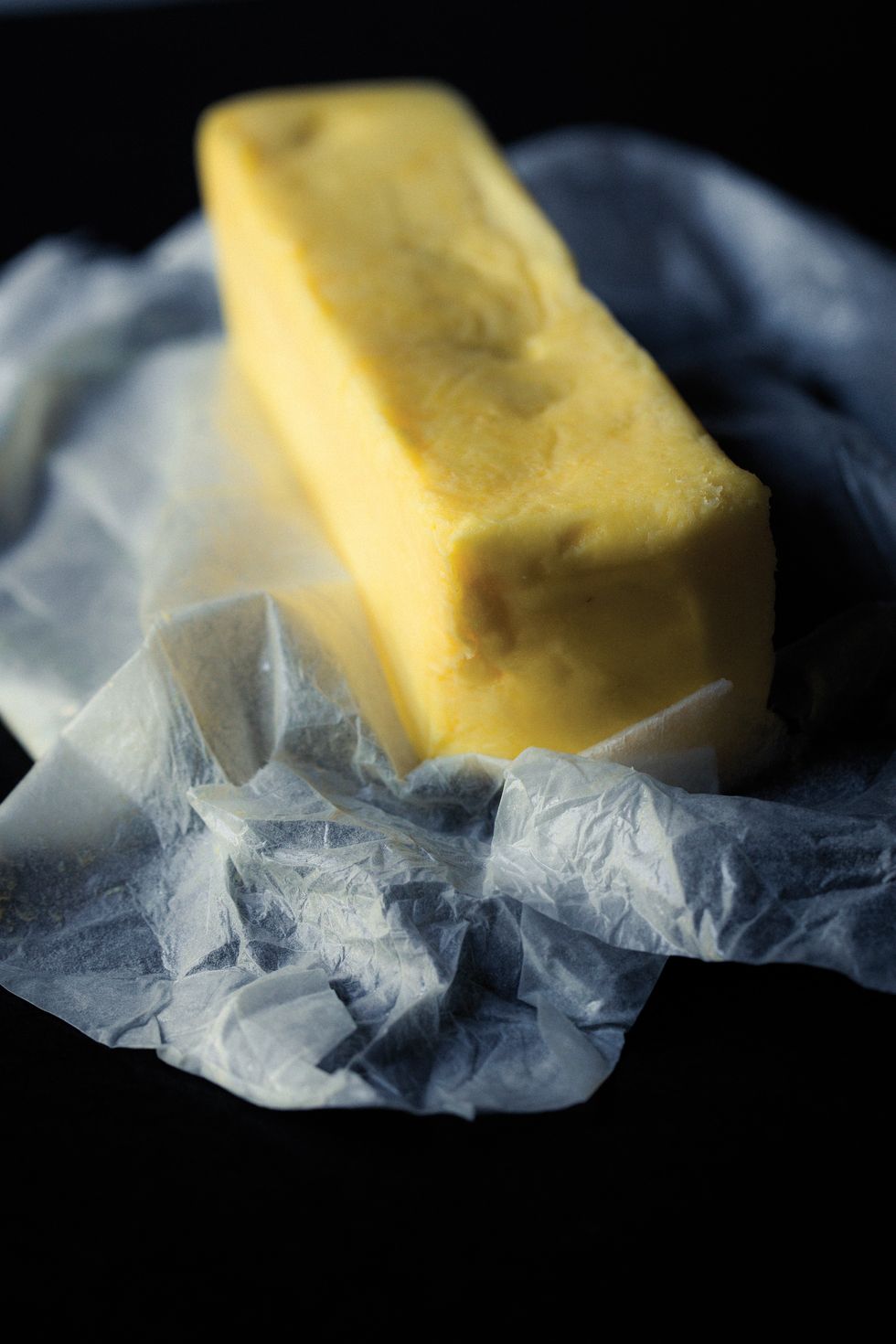7x7 asks the city's chefs for the recipes to their most loved cocktails, bar snacks, starters, mains, and desserts. If there's a dish you can't stop thinking about and want to make at home, email schuyler@7x7.com. Your wish may end up on the blog, along with the actual recipe from the chef.If you're up for the challenge of churning your own butter, what better person to learn the technique from than Manresa's chef David Kinch? He throws a thick pad of this in with his ridgeback shrimp for a succulent appetizer in a flash.
Manresa Butter
Makes about 5 pounds
7 1/2 quarts heavy cream, the best quality that you can find
81/2 to 12 1/2 cups) chilled filtered or bottled water
Coarse sea salt
Special Equipment: Electric butter churn, wooden board and paddle
1. Age the cream in the refrigerator for 5 to 8 days, tasting it every day for the progressive taste you are looking for. You want a cream that loses its bright, sweet freshness and slowly develops a complex and deep flavor well before souring or culturing. It’s difficult to describe, but you know it when it happens.
2. We put all the cream into an electric butter churn when it is quite cold (39 to 42 degrees works well). Begin to churn.
3. The cream should separate after 45 to 65 minutes of continual churning. The butter will taste of off odors if it breaks too early or too late. Once there is a separation, and you start to see the butterfat or curds, it is wise to continue a few minutes longer, as the curds will gather and more and more of the buttermilk will be released from them.
4. Drain off the buttermilk. Do not throw this away! It is an amazing product in its own right, worthy of the whole butter-making process. You can use it to make ricotta or to marinate or ferment vegetables into a haunting pickle, or perhaps add a touch of sugar and slowly reduce it until it caramelizes.
5. With the curds still in the churn, pour the water directly onto the curds.
6. Turn on the machine and churn for about 10 seconds to wash the surface of the curds of buttermilk.
7. Drain completely and remove the curds from the churn.
8. Place them in a very clean colander lined with cheesecloth and set over a vessel to catch the draining buttermilk.
9. Cover the colander with plastic film so the curds do not pick up any odors and refrigerate overnight. This will allow much more of the petit lait to drain away.
10. The next day, remove the curds and, working in batches of about 1 pound each, beat the remaining buttermilk out of the curds with a wooden paddle on a wooden board. It will take some time and a bit of practice to smack the butter properly. You will feel a mist of the buttermilk being expelled as you beat the butter.
11. You will know the butter is finished when it develops a beautiful shine and color and an amazing waxy texture.
12. You can add sea salt to taste during the final beating process. (We have found you cannot measure the amount of salt for the butter because of the seasonal nature of the curds. You will find you will use a bit more or a bit less with the seasons. Trust your taste and your instinct.)
13. There are easier ways of beating out the buttermilk, but this process will allow you to see different layers in the butter, showing off its handmade provenance.
Variations: You can also flavor the butter with different herbs or seaweeds. We have flavored butter with both yarrow and dandelion for preparations of scallops and roasted veal to great success. Sea lettuce and red dulse are fantastic for a seaweed table butter, as is piment d’Espelette. Simply stir it into the butter before refrigerating.
Notes: Sanitation is key. You cannot over-clean with this recipe. We are constantly cleaning the churn and the paddles with a very mild bleach solution and then rinsing them with plenty of water mixed with a small amount of ascorbic acid to eliminate all odors. The wooden paddle and board for the beating and salting are never washed with soap but in very hot water. We then bury the board and paddle in kosher salt to prevent contamination.
Reprinted with permission and recipe adapted from Manresa by David Kinch with Christine Muhlke, © 2013, published by Tend Speen Press, a division of Random House, Inc.





















